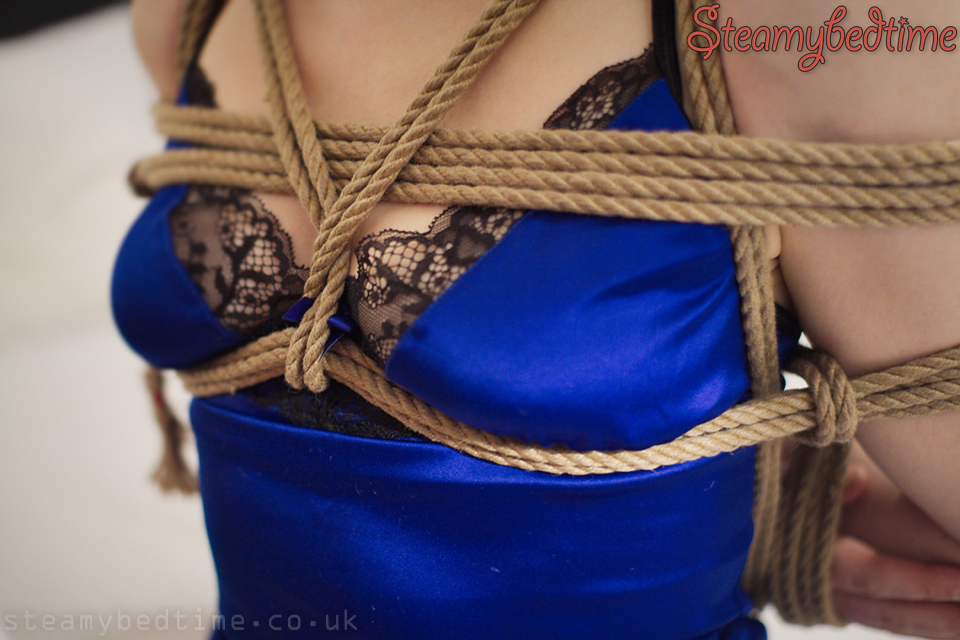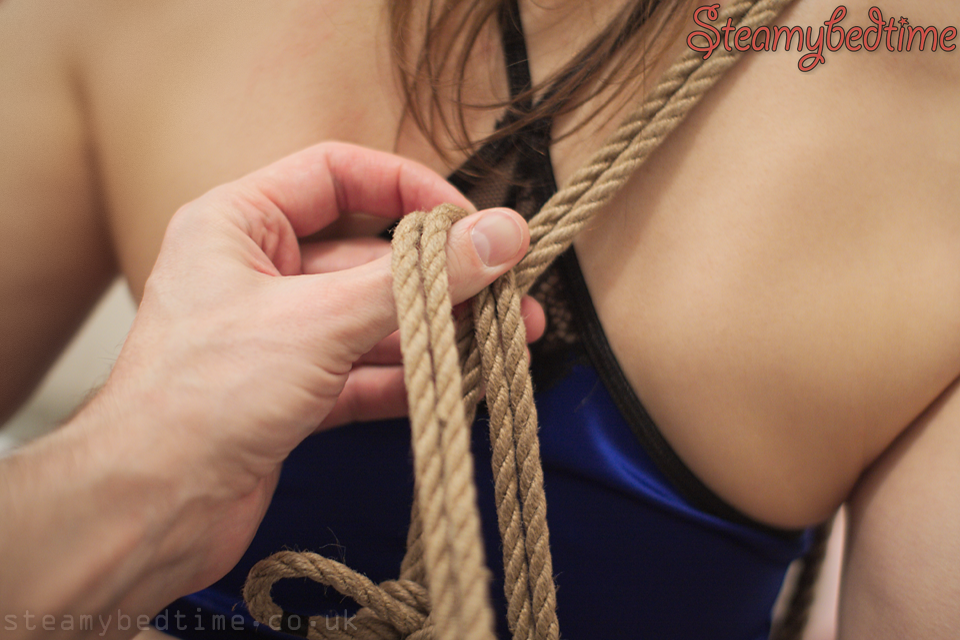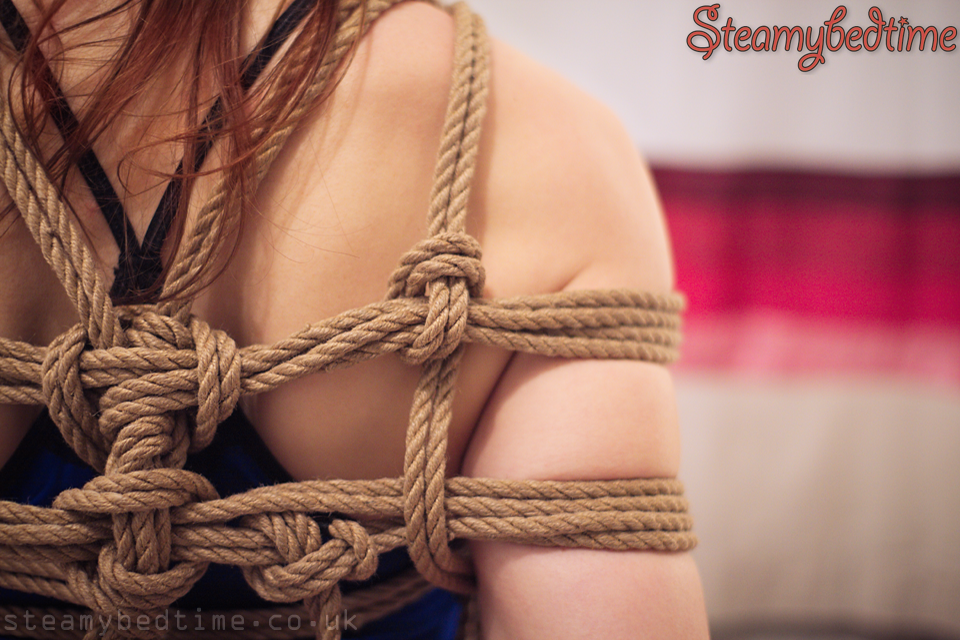Week 09 of 52 : Frictions and Complexity
Our Photo-A-Week project has been following a series of themes, and up to now has centred on a type or style of knot. For a the next couple of weeks we're taking a look at frictions, a feature often seen in ropework and quite distinct from an actual knot.
As we've encountered them thus far in our explorations, frictions have ranged from application of reverse tension to change the direction of your rope, to simple wraps adding stability, to specific forms such as an alpine-hitch, or the half-moon that you would see at the rear of a gote shibari. (And I'm sure many more that we have yet to learn about!)
Aside from their structural and aesthetic importance, frictions can also bridge the way between sections of a more complex tie. Having captured your partner's wrist for example, a succession of wraps around their arm and body, locked into place with appropriate frictions, might turn a single-column tie into a beautifully unyeilding, sensual embrace of rope.

In the image above, upward tension is applied to the lower wrap of this gote shibari, creating a pleasing frame and the additional twist increases the friction and helping keep the structure of the tie.

The rear of this improvisation, essentially a gote shibari with additional wraps added, utilises numerous frictions to punctuate and lock-off each section of the tie. Perhaps it became a little unauthodox? Maybe, but we loved the busyness of the multiple wraps.

In this final image (I've always loved the contrast of jute rope against satin!) we tried to use the rope to mirror the styling of the blue chemise.
References
The ShibariClasses tutorial Tying Techniques Part 1 addresses some really helpful points of rope-management and simple frictions. And, whilst it's not a specific section of the course, Upper Body Ties Made Easy explores many frictions within a deeper exploration of the techniques being taught.
We also note that a new course has just been added, Simple to Complex, which looks great - but is a course we haven't followed. Yet. ;-)
In all the photos for this series we're using Okinawa Jute rope from Esinem-Rope.
Next week we're continuing our look at frictions, with some close-ups of a couple of common forms...







